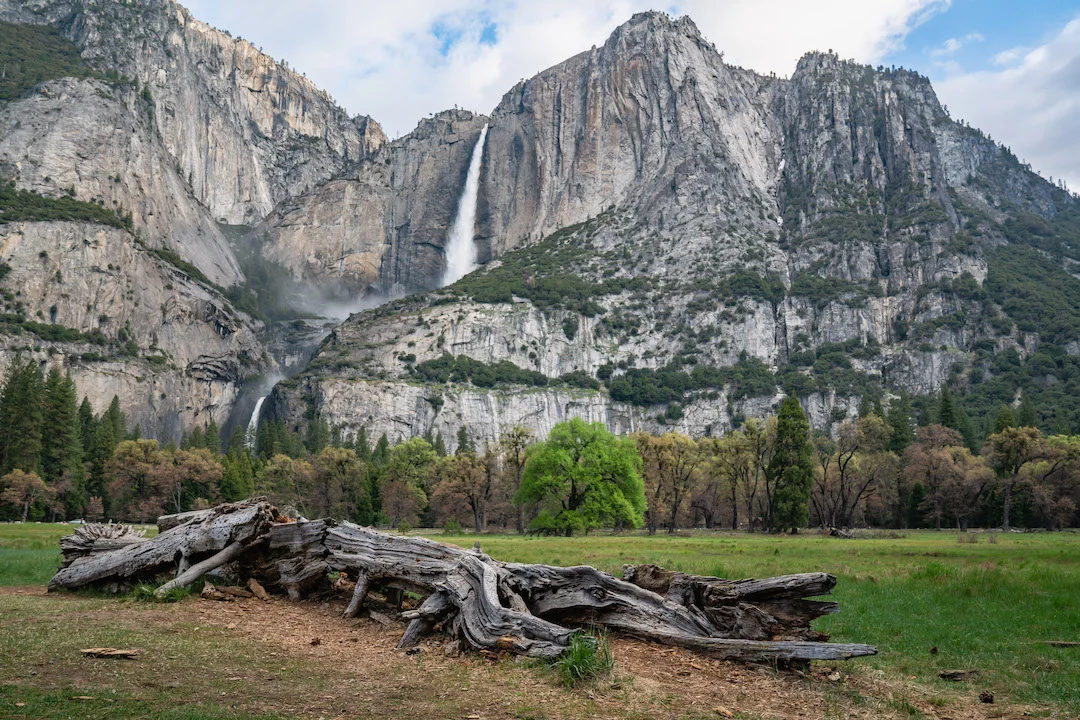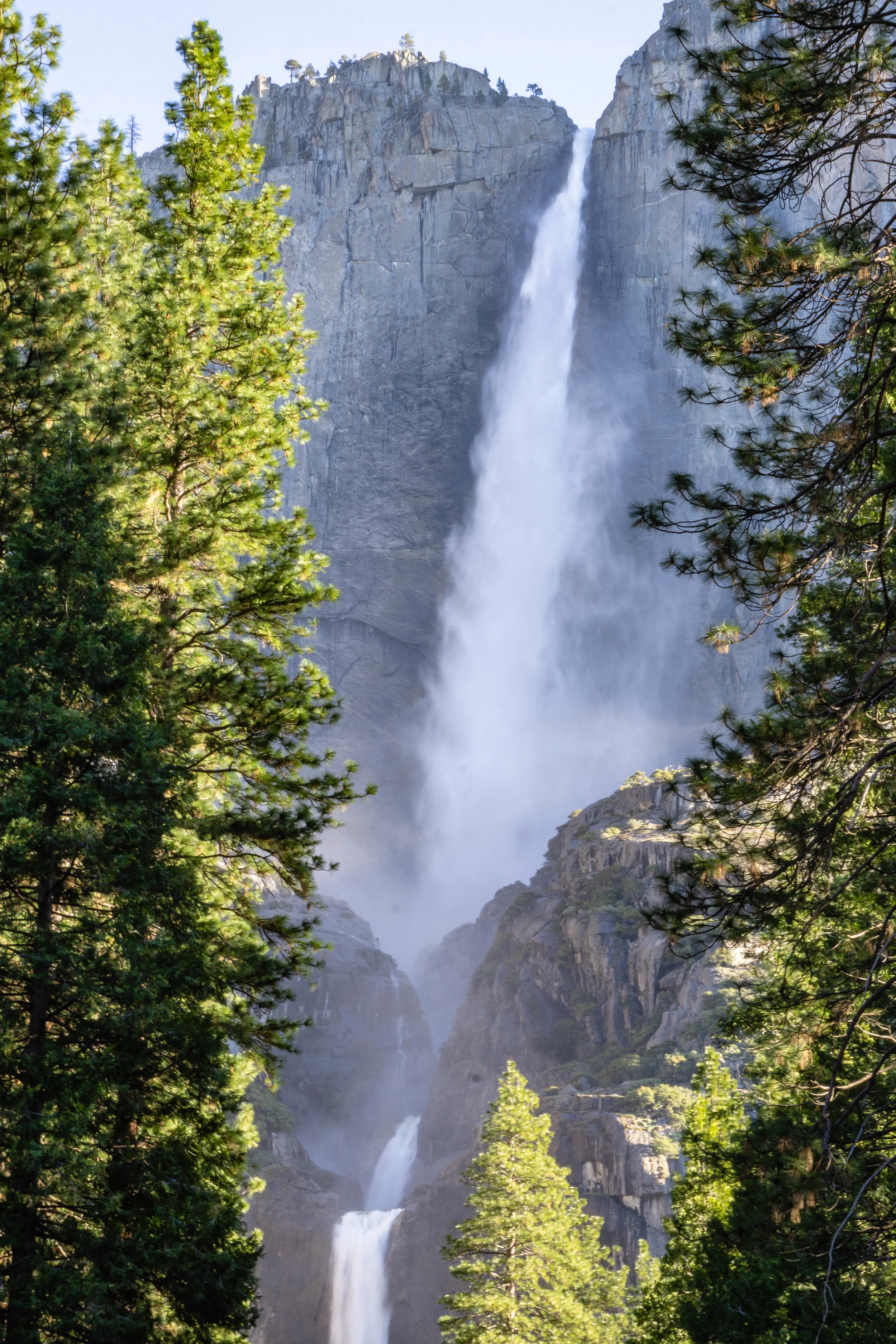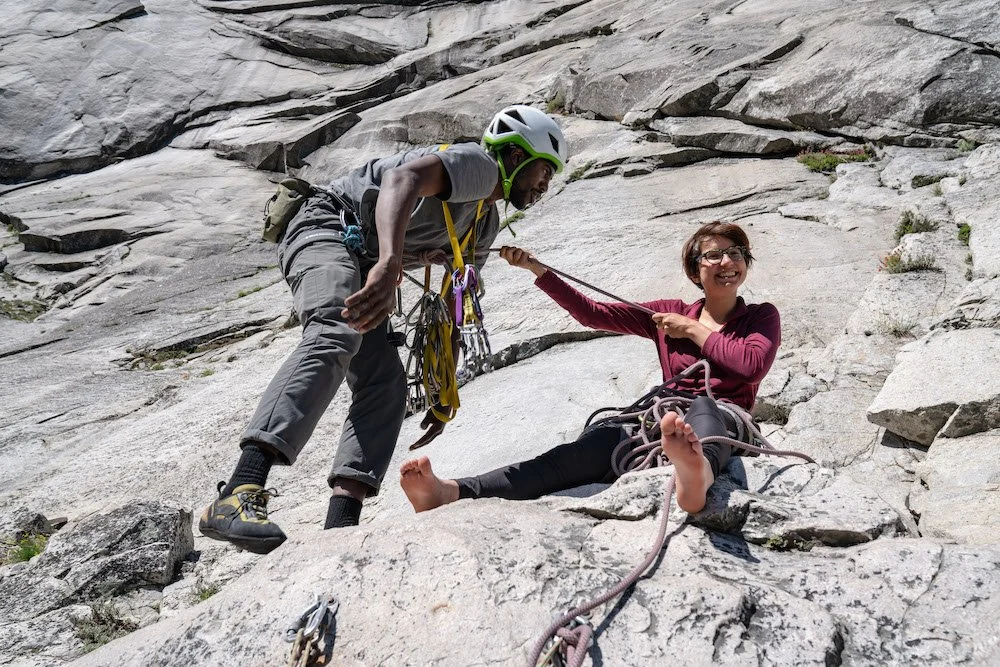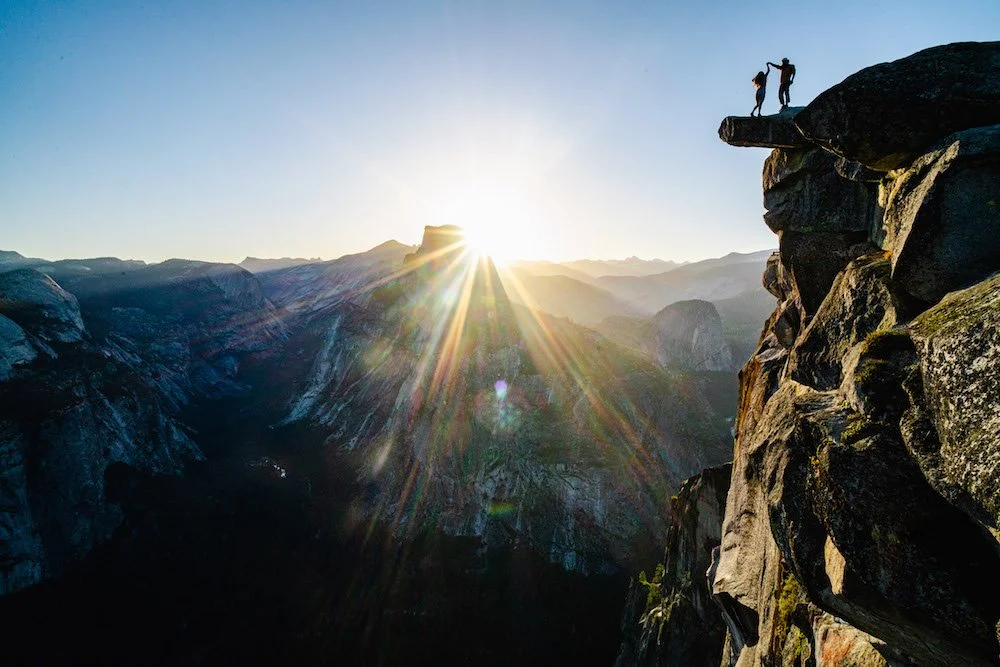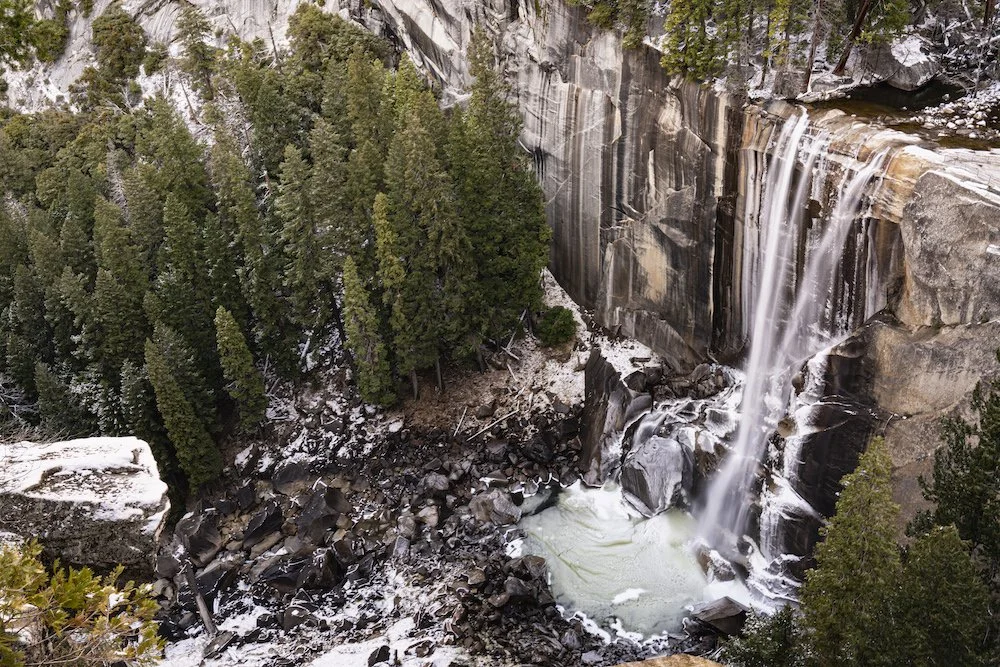Yosemite Falls can be seen throughout a large portion of Yosemite Valley including from the Yosemite Chapel, Merced River Bank Yosemite Valley Lodge and even high above the valley from Glacier Point. You might think it’s visibility is why this waterfall gets its namesake, however that is not the case. Yosemite Falls get’s it namesake because it is the tallest and strongest flowing waterfall in all of Yosemite Valley. This makes it the centerpiece of Yosemite.
Spring time flow of Yosemite Falls rushing in the background while walking to the Merced River bank to hang with friends. Photograph by Dalton Johnson
Overview of Yosemite Falls
Where is YOSEMITE FALLS:
Click here to discover which waterfall is Yosemite Falls
Best Season for YOSEMITE FALLS:
The best season to watch Yosemite Falls is during the spring months, however this Yosemite waterfall runs year round.
Spring time has the highest flow
Best Places to see YOSEMITE FALLS:
You can see Yosemite Falls from almost everywhere in Yosemite Valley, but here are some of my favorite places to sit back and enjoy the views of this magnificent waterfall.
Merced River Bank
Yosemite Chapel
Looking over your should while hiking the 4 Mile Trail
FUN FACTS ABOUT YOSEMITE FALLS:
One of the tallest waterfalls in the world at a total of 2425 feet and the tallest in all of North America, it is actually made up of three separate drops:
Yosemite Falls is the tallest waterfall in North America
Upper Yosemite Fall is 1,430 feet tall
Middle Cascades is 675 feet tall
Lower Yosemite Fall is 320 feet tall
Total Height of Yosemite Falls: 2,425 feet
Yosemite Falls is the fifth (5th) tallest waterfall in the world
During the early summer months (April-June) you can see a Moonbow
Rushing water plummets 2,425 feet down Yosemite Falls to the valley floor. Photograph by Dalton Johnson
Hiking Yosemite Falls
There are a lot of great reasons to hike to the top of Upper Yosemite Falls. From the trail, the views of Yosemite Falls are breath taking and the sound of the thundering flow humbles the soul. Halfway up the climb you get an amazing view of Yosemite Valley, with Half Dome in the distance. Once at the top, watch as the falls plummet down the side of the mountain and get a greater sense of just how far you hiked. And if you have the energy to continue onto Yosemite Point, your reward is one of the best views of Half Dome in all of Yosemite National Park.
This is not a hike to be underestimated. Getting to the top of Upper Yosemite Falls is challenging. Most of the trail is a steady, uphill climb with a relentless number of switchbacks.
Can you hike to YOSEMITE FALLS?
Yes, you can hike to all three waterfalls that make up Yosemite Falls. If you are trying to get to the top, this hike is called Upper Yosemite Falls Hike with the average time to hike to the top takes 5 hours and 35 minutes. Here are all the details on the Upper Yosemite Falls Hike:
Distance (round trip): 7.6 miles to the top of Yosemite Falls; 8.7 miles to Yosemite Point
Elevation gain: 3,218 feet; 3,700 feet to Yosemite Point
Route type: Out and Back
Trailhead: Camp 4
When to go: Spring, summer, or fall. The Yosemite Falls is at its maximum flow in spring and early summer. By the end of summer into autumn, it could be just a trickle or completely dry. During winter, this hike often has snow or ice.
Difficulty: Very strenuous
Most people only make the short trip to visit lower falls, upper falls is definitely worthy of visiting due to its panoramic views of Yosemite Valley and the opportunity to see this amazing waterfall up close.
Is the hike to Upper Yosemite Falls Hard?
The hike to Upper Yosemite Falls is a strenuous hike that should be respected. With this said, please do not let the idea of a hard hike prevent you from going on this magnificent hike. There are several stopping points along the trail to enjoy the views of the falls. If at the that point the idea of the summit is too much, you can always turn around. Enjoy the hike, enjoy the views, and embrace your own challenge.
What to bring while hiking to upper Yosemite falls:
Hiking Shoes. Hiking shoes are preferable, however, running shoes with good support and good traction are sufficient.
Water. The National Park Service recommends 4 liters of water per person if you plan on hiking to the top of Yosemite Falls. There is no water on the trail. Once at the top, if you bring a water filter, you could fill your water bottles.
Sunscreen or sunshirt. There is very little shade on the mid to upper parts of the trail.
Extra layers. The weather in Yosemite Valley can change quickly, especially from day to night, so make sure to bring a warm layer if you plan on hiking late in the day.
Hiking poles (optional). Hiking poles are my new favorite hiking gadget and I highly recommend them. They take about 30% of the weight off of your legs as you descend, easing knee pain and other symptoms.
Small backpack. I’ve found it is convenient to carry a small backpack (often called a day pack) to hold a camera, snacks, water bottles, and an extra layer.
Yosemite Falls reflecting in a seasonal pool of flood water during in Cook Meadow. Photograph by Dalton Johnson
Photographing Yosemite Falls
Next to Half-Dome, Yosemite Falls is probably the most iconic feature of Yosemite National Park. The waterfall itself is actually 3 waterfalls, upper (the tallest), middle (not visible from the ground) and lower (most accessible). While you can photograph Yosemite Falls at any time of the day, if you happen to visit during spring, be sure to make your was to the Lower Falls around 7am – 8am to witness a beautiful rainbow coming out of the falls mist.
Different Places to Photograph Yosemite Falls
While the waterfall is seen from much of Yosemite Valley, it is best viewed in these locations:
Best Time of year to Photograph Yosemite Falls
The best time of year to photograph Yosemite Falls is during the spring season, or March until May. This is the time when the snow melt is at it’s greatest, so Yosemite Falls is at its strongest flow. The flow can be so powerful that it will shake your camera on a tripod and the sound of the waterfall will be like a jet engine. CRAZY!
What gear to bring to Photograph Yosemite Falls
Yosemite Falls has a wide variety of locations to photograph, because of this, you will want a variety of gear for your time photographing this gorgeous waterfall:
Swinging Bridge
Camera
Bring a Tripod
Lens range: 24 to 105mm
Bring a circular polarizer
Lower Yosemite trail location 1
Camera
Bring a Tripod
Lens range: 16 to 70mm
Lower Yosemite trail location 2
Camera
Bring a Tripod
Lens range: 16 to 24mm… maybe a 50mm
Bring a towel… this spot can get wet from the mist
The field off of Southside Drive
Camera
Bring a Tripod
Lens range: 24 to 105mm
Bring a circular polarizer
The field just south of Ahwahnee Hotel
Camera
Bring a Tripod
Lens range: 50 to 200mm
Bring a circular polarizer
Yosemite Falls under the night sky. Photograph by Dalton Johnson
FAQ about Yosemite Falls
Does Yosemite Falls have a webcam?
Yes, here is the link to the 24/7 webcam of Yosemite Falls: https://yosemite.org/webcams/yosemite-falls/
What does Yosemite Falls look like at night?
At night, you can still see the mighty flow of Yosemite Falls. Unfortunately, the Milky Way does not rise behind the waterfall. The above image is of Yosemite Falls at night.
What is the elevation of Yosemite Falls?
Yosemite Falls sits between 3,967 feet at the trailhead and 6,526 feet at the top of the upper falls.
What is the Weather of Yosemite Falls?
The weather at Yosemite Falls can change drastically throughout a day and throughout the year, so here is link to the current weather in Yosemite Valley: https://forecast.weather.gov/MapClick.php?lon=-119.61292&lat=37.73639#.Y6MvbOzMKko

